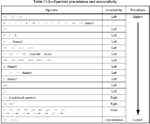anusha vasanta
Member level 1
hello help me with this issue. i am having 65 bytes of my original data i need to get some 80 bytes of data_new .(65+15) in this i need to pad 15 bytes of zeros i implemented this using counter but still getting some issue with using temp reg here.help me with this .thankyou
